The kitchen hood is an important factor that you need to consider when installing a new cooking range. They can be primarily categorized as ducted and ductless or recycling chimneys.
In ducted kitchen hoods, a duct pipe is fixed to the chimney that takes away the heat, odor, smoke and other particles out of the house. But in case of ductless or recycling chimneys, smoke, odor, and other impurities get filtered and fresh air is circulated back into the kitchen.
Of the two, ducted chimneys have been observed to be more effective. But ductless chimneys have to be installed in homes where there’s no space for ducts to be installed. Ultimately, which one you go for will depend on your range and kitchen setup, but you need to make an educated choice as well. The following is a list of few things that you have to be careful about during kitchen chimney installation.
Things to Consider While Installing A Kitchen Chimney
Kitchen chimneys extract heat, smoke, food odors and air-borne grease with the help of its internal fan and filter. Ducted chimneys use a duct to transfer the stale air from the chimney and release it to the outdoors. However, ductless or recycling chimneys take in the stale air and purify it by advancing it through a set of charcoal filters. The purified air is then circulated back into the kitchen.
As the Indian style of cooking involves a lot of frying and use of ground spices, ducted chimneys work better as compared to ductless chimneys. There are several options of chimney models to choose from according to the kitchen design and homeowner’s preference, such as the under-cabinet kitchen chimney, a wall-mounted kitchen chimney or a ceiling-mounted chimney.
1. Chimney size
60 centimeters or 90 centimeters is the standard width in which ducted chimneys are available. If the cooktop has two to four burners, going for a 60-centimeter-wide chimney works well enough. However, if you need a chimney for a cooktop with three or five burners, it is recommended to go for a 90-centimeter-wide chimney.
It is important to note that the size of the chimney must always be slightly bigger than the size of the cooktop or of the same size. This ensures that the chimney sucks up all the fumes without letting them escape into the kitchen.
2. Chimney filter
Chimney filters are available in two types – cassette filter and baffle filter.
A cassette filter has numerous layers of metal mesh to accumulate the oil, grease and other kitchen pollutants, and release the smoke through a duct or a PVC pipe. However, it comes with a drawback. The cassette filter tends to clog up with the kitchen pollutants from time to time, and the suction power of the chimney subsides.
The baffle filter, on the other hand, has steel and aluminum layers that overlap with each other and change the direction of airflow. Baffle filters use ‘cut-and-chop’ technology to separate the grease from the smoke, and their suction capacity doesn’t decrease over time due to clogging.
Note: Only ductless chimneys have carbon filters. Grease and charcoal filters clean the air further before releasing it back into the kitchen.
Besides, these filters need a lot of maintenance and also have to be replaced every three to six months.
3. Chimney suction power
Choosing a chimney with the right suction power is essential. The suction power of a chimney is measured in cubic meters per hour, and for Indian style of cooking, it is recommended to go with a power range of around 400 to 1000 cubic meters per hour depending on the size of your kitchen.
4. Chimney duct
The duct size and number of turns or bends in ducts is an important factor to consider. If the duct size is really long, you need to make sure the suction power of these chimneys is higher. The suction here needs to be high for the smoke and other impurities to travel out completely from the duct leaving the kitchen air clean.
The length of the chimney duct should not exceed more than twelve feet. Make sure that the chimney is positioned in a way that the pipe connecting to the outdoors is short so that the air suction power of the chimney can deliver maximum efficiency. But in most Modern houses you will find a window or say a wall which has some hindrance because of which you have to install the chimney further away. This certainly drops the performance level of the chimney.
Usually, people prefer using stainless steel for the chimney duct pipes because it is durable and offers good resistance to corrosion. PVC and aluminum can also be used for chimney ducts. It is advisable to keep the bends in the chimney duct to a maximum of two as shorter pipes with fewer bends work more effectively than a long pipe with more bends.
5. Cut-out for chimney duct in the external wall
Make a 6-inch-wide circular cut-out in the external wall for the chimney duct. Also, the cut-out needs to be made on the external wall such that the chimney height in the kitchen is seven feet from the floor level or above the window-lintel level. In case your kitchen doesn’t already have a circular cut-out, get the job done by a chimney installer. They can make the hole in the correct position of the external wall and install the chimney.
You could also use the cut-out or position of the external exhaust fan for passing the chimney pipe through it. However, if you are living in a rented apartment or building with restrictions, going with a ductless model is the only option.
6. Height of chimney from kitchen platform
The distance of the chimney from stove or countertop must fall within the range of 26 to 30 inches.
No matter what type of cooking range you have, like an electric cooking range, built-in hob or a usual cooktop, the distance to be maintained is the same. The distance shall not be less than 26 inches nor more than 30 inches. Anything more than that will not draw in the cooking fume effectively as the chimney will not be able to take away all the smoke, heat, odor and impurities completely out of the room. Anything less than 26 inches can block the use or view of pans and vessels while cooking. Therefore, to avoid any major consequences and ensure the chimney works well, the distance shall be maintained anywhere between 26 inches to 30 inches.
Choosing the Best Hood/Chimney for Your Kitchen
To decide which type of hood works best for your kitchen, you have to consider the workspace, your cooking style, and personal preferences. The following points may help you pick the right kitchen hood for your kitchen.
Flexibility: You can choose between ducted or ductless kitchen hood if you have ducts in your kitchen, else going for a ductless one will be the only option. Generally, a ductless hood will offer more flexibility. The type of hood you can have will also depend on where you are planning to put your kitchen range and cooktop.
Humidity and air quality in the kitchen: You need a ducted hood if you have a humid kitchen. If you can manage with recirculating air and a bit of noise, a ductless hood will be fine.
Budget: Installing all-new ductwork that fits your duct range can be a bit costly. If you are planning to replace an old range and hood, it is easier to go for the one that you had before and also saves you from a lot of money and stress. However, it is recommended to check the budget and cost of kitchen chimney installation before selecting a hood.
Finally, it is your choice whether you choose a ducted or ductless kitchen hood. Ducted ones may offer better efficiency in most scenarios, but ductless hoods can also work fine in a lot of settings. All you need to do is examine and research your options and consider the pros and cons of both the types of kitchen hoods and then select the style that you like the most.
Entrust a Professional
Usually, unless you understand and can differentiate between the different kinds of Kitchen Chimney types and installation limitations, it becomes impossible to source the modular kitchen essentials for your home. We at Contractorbhai make the decision easy for you by providing the service bundled with the rest of our Interior Design services at a clear transparent pricing.
Interested in Home Renovation? – Set up interior design consultation

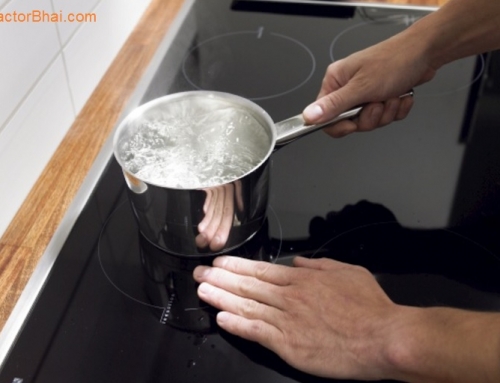
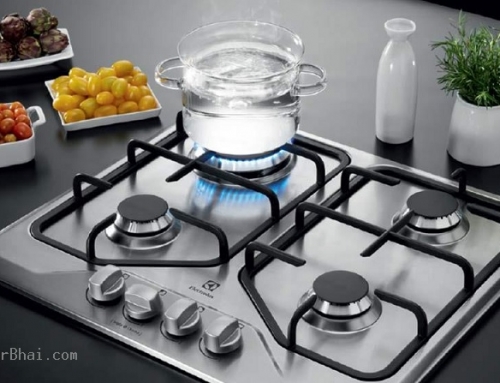
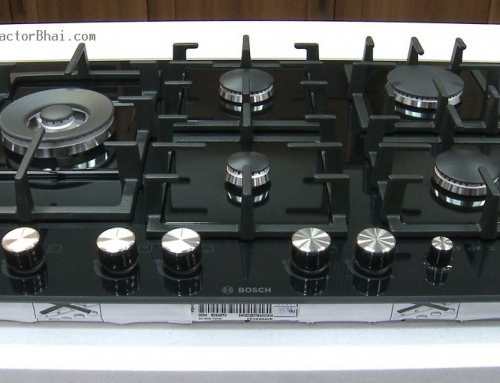
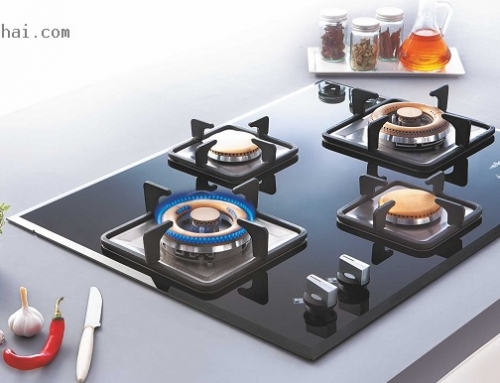
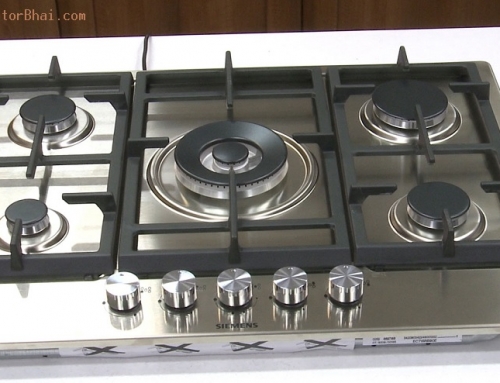
thanks for Info.
Thanks a Lot dear team..
Subrat ji, glad to know that information helped
Thanks for kind information
I’m told that a higher suction chimney will be able to work since behind my stove there is a window so distance between stove and bottom of chimney is 4.5 ft. Is this gonna work ?
Is the pipe of the duct of the chimney will see at the bottom?
Rajeev ji, if I understand correctly, you are asking about end of pipe, right ? should end be pointed up or down ? If that is your question then answer is – best is to keep it straight. If there is no problem in keeping it straight, then leave it like that. This will avoid one more turn in pipe & this way you will avoid extra burden on your chimney.
Incase you are asking about visible part of duct/pipe connected to chimney/ well most of the time, people hide it behind partition. However there are design concepts, where these pipes are kept visible & it dds to the beauty, but otherwise by default they are hidden through design
The distance should be between 65-75 cm
This is the best
I brought a 60cm 1150mm3 elica flat chimney. I have sunflame 4 burner cooktop and a prestige induction heater to operate. Is the chimney sufficient to extract gas in case I operate induction and cooktop simultaneously.
Tejaswini ji, you really need to talk to chimney manufacturer or an experienced shopkeeper before making a decision.
Recently, I bought a hindware revio 60cm chimney 1200 section. The technical visited for installation and made us aware that the minimum distance between cooktop and chimney base must be 34″ else it will catch fire. As per the design of my kitchen the distance available is 27″ which is enough as per the manual. I am confused what to do he didn’t install it and suggested me to get another model with low suction or get my kitchen redesigned. Please suggest what to do.
Amit ji, please take decision as per expert advice. If company representative says it cannot be used in present design and then you should avoid it.
Sir, I want to install a chimney in my kitchen but the only place for installation is above the window of size 5×6 feet. So I want to know weather it possible to place it above the window or can u help in redesigning the kitchen.
Yes many home owners do install chimney with window right next to gas stove/cooking range.
Hi.I have bought hindware company for installation. I want to throw the by 6″ Pipe for 15 feet.Please suggest .
Due to height of 33 inches from top of the burner to bottom of chimney I have decided to buy 90 cms with 1200+ suction chimney. I have a window just behind the gas unit & hence given you 33-34 inches. How much would be the loss in performance in the ductable unit.
I have bought 700 suction kutchina chimney and i have just 22 inches space btw chimney and stove… please suggest me if its enough space ..??
I have the exhaust hole drilled at 95 cms from the granite top. Can you suggest which type of chimneys can be used in this case
Mr Vinod, it is just not possible to tell using just one piece of information. Ducted chimney are always better if ducting is possible at your place. Please talk to your local kitchen designer or shop keeper who sells chimney before placing order for any chimney.
ContractorBhai…I have elica 1100 speed pyramid chimeney and the distance between cooktop and hood is about 30.5 inches. Is it fine, can I go with that?
Can we install the Sunflame 90cm Chimney with suction 1230 M cube per hour 5 feet above the gas burner
You have to confirm with company representative or your kitchen designer will help you make decision. Without knowing all details, as such I don’t see any issues. It should work with given limitation, however take final opinion of a local expert.
This is because we have a window fitting which is up to the height of 5 feet in front of the gas burner
But will it be effective
What would be the so-called limitations
Why I am asking so much of questions is because usually it is said that chimneys should be fitted maximum 32-36 inches above the gas burner , now if I fix it at 60 inches above the gas burner will it be effective?
will it serve the purpose of getting the chimney installed?
Please verify thanks
Contractor Bhai,we have a rectangular window (5 by 2 feet)in the kitchen which is just below the beam.”Is the remaining height sufficient for a chimney”.Should I reduce the height of a window by 6 inches.I do not want the duct to go outside through the window,rather I can close the window by 6 inches.Since light is little less in the kitchen,I do not want to close it.Please help me deciding this at the earliest.It is very urgent becoz plastering will get over by tomorrow.
This is a very common situation(window above cooking area. Many home owners install Chimney at higher height then specified in such cases. Chimney efficiency will go down to some extent but that is bets option. You have to get more precise answer from company representative who will fit the chimney or your kitchen designer.
If standard is 26” height so, why should less or more height required to installed a chemny.
30 to 40 mm or 30 to 4o metres
30″ = 30 inches
what if i have ceiling height 11 feet
I have gap between hop and Kaff chimney 60 cm model dsc-60 is 28” can I install please suggest
it should be ok, however let your kitchen designer or installer take final decision.
I bought hindware chimney with suction power 1100.
Can i install it on above 40 inch from gas stove.
yes you can
In my kitchen space above cook top is 102 cms from platform.Total height is below a lintel / loft.Making hole in loft / lintel for exhaust pipe for filterless auto clean chimney of 60cm and 1200cmh is not possible.Can you please let me know the space above chimney for ducting pipe below lintel.
Most chimney should work in this situation. However, you should check with chimney shopkeeper. Or call toll free numbers of chimney brands. Show them pictures with dimensions. Ask them which model can be fitted.
I have a loft over cooking platform. The distance between the cooking platform and loft is 4.5 feet. Height of cooking range is .5 ft. The distance between cooking range and chimney hood should be at least 2.5 ft. That leaves 1.5 ft for accomodating the hood and the duct, which would run parallel to the loft till the outer wall. Please suggest a chimney with hood and duct totalling 1.5 ft.
You have excellent kitchen design, pretty much all normal chimneys will go with your kitchen. Buy a good quality branded chimney, choose company that offers good service in your local area. Warranty must.
My kitchen has a huge window just behind the job.If I install a chimney,the distance between top of hob and bottom of the chimney is a little over 3 feet.Is it ok? Please clarify.
Yes it is alright, it will work.
I bought Kutchina Amora iclean chimney which has 1400cc saction power.Technician installed it 39inches height.Is the height ok or should I reduce the height?
It should work fine, dont worry.
my kitchen is on ground floor. can I installled a vertical exhaust pipe for chymney on first floor roof.( vertical pipe is 10 feet and flexibal aluminimum pipe of 5 feet. Total length is 15 feet approx). what capacity of chymeny is best for my kitchen. plz suggest.
You need to confirm this technician from company you are buying chimney. We do not have much experience with vertical placement of duct.
What is the recommended height for angular chimneys?
EVery company has exact specifications for different models they make. Please chack with manufacturer or shop selling you chimney.
Hi, I want to install a chimney on second floor kitchen and want to take the pipe upto the roof of 4th floor, is there any kind of chimney which throw oil,smoke ,odours etc from kitchen upto 4th floor, actually there is no provision to install chimney pipe on same floor so i need to make a hole in ceiling and take out the pipe to 4th floor roof. pls. suggest.
Use duct less chimney, not a good idea to take pipe across floors in residential kitchen situation.
hello sir,i am thinking of ordering hindware nevio plus 90 (1200) chimney in my kitchen…..but the problem is i am having a window just at back of the stove. Its height is 4.5 feet.can i install the chimney above my window??????
in such cases part of the window gets covered.
I installed a new chimney (Faber 90 with 1500 suction power). Distance b/n top of the stove to the bottom of the chimney is 31 Inch. Our kitchen platform is bit low (29 inch). So person doing cooking, head is almost touching the chimney!! Is it OK to increase the distance to 33 inch given that the section is 1500?
yes 33 inches is ok!
hi
recently i installed a hidware chimney of 1200 suction power, but while cooking paranthas, smoke spreads in the kitchen and all around the house it not passes through chimney, the distance beteen gas and chimney is 30″, please suggest…
Am planning to install Faber crest filter less 99cm (1200m3) kitchen chimney. The distance between gas stove and chimney would be 44” as window is behind the gas stove. As the ideal distance should be between 26” to 30” will this work or should I change the position for gas stove to match the ideal distance?
Hello sir,
I have been suggested by kaff chimney dealer to buy the 1250m3 suction power chimney for a height of 30foot vertical and 10 foot horizontal in zigzag direction.
Total length of pipe will be approx -35-40foot.
Please share your opinion.
dealers & shopkeepers have lot of experience for best chimney option. Yo u should go ahead with suggestion.
I am so happy I found your blog and I absolutely love your information about how much distance is enough between cooktop and kitchen hood chimney and the tips you have shared are awesome. I liked and it is wonderful to know about so many things that are useful for all of us! Thanks a lot for this amazing blog!!
Can i hang straight line chimeny (Hindware Chimney Auto Clean Hoods Series SCARLET 60 – 1250 cu.mtr/hr) above my cooking hob at 4ft height ? Will it be effective? My cooking area is below kitchen window (which iam getting mad in UPVC frame). So i hang the straightline chimney in the partition section of window. I haven’t bought the chimney but this looks compact and takes up less space compared to other wall chimney.
This should work. I don’t see anything wrong in using this model for your situation. Try to get fitting done by company technician. Keep warranty card safe.